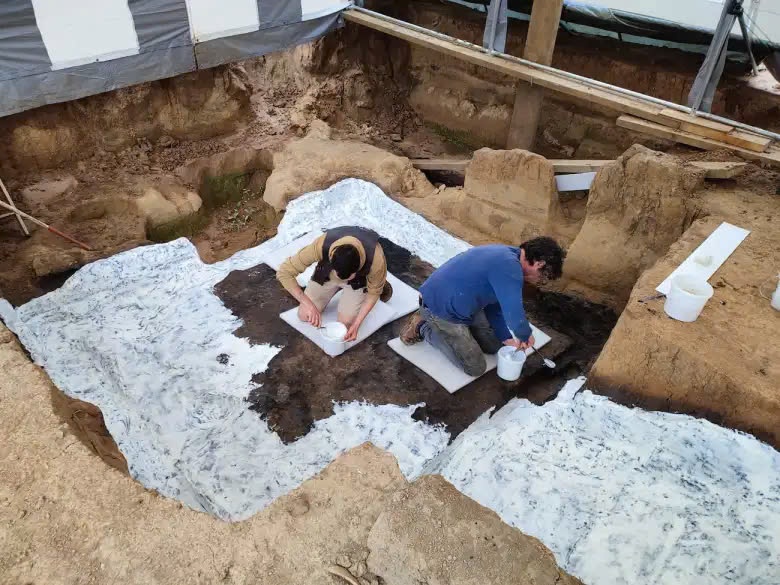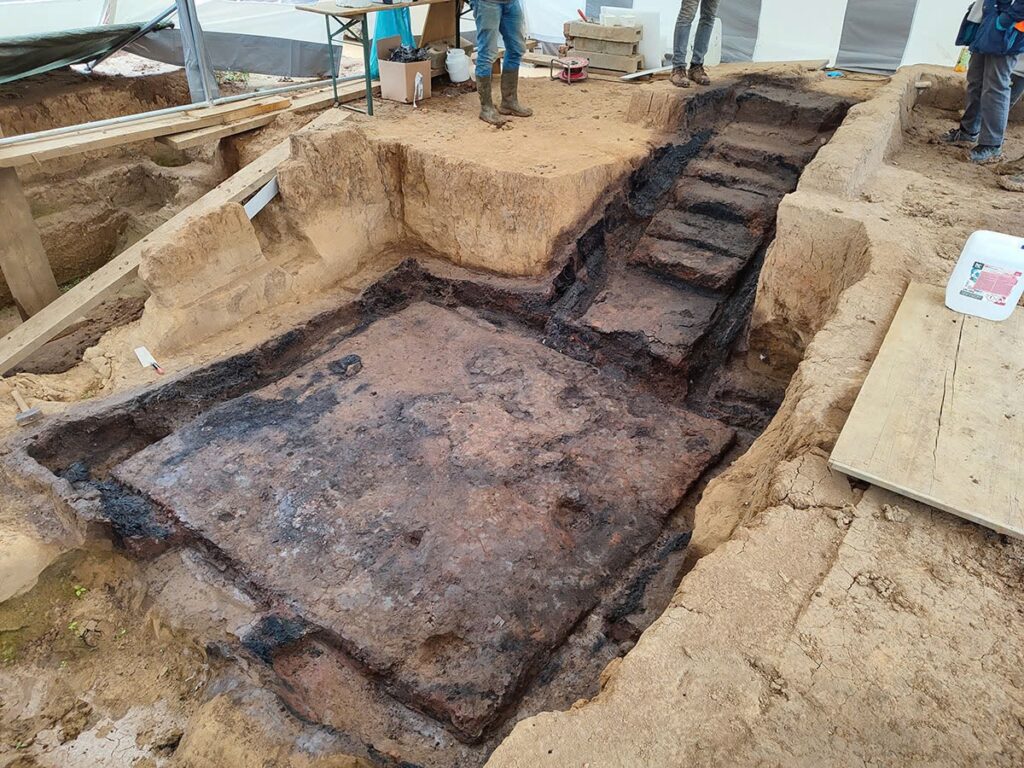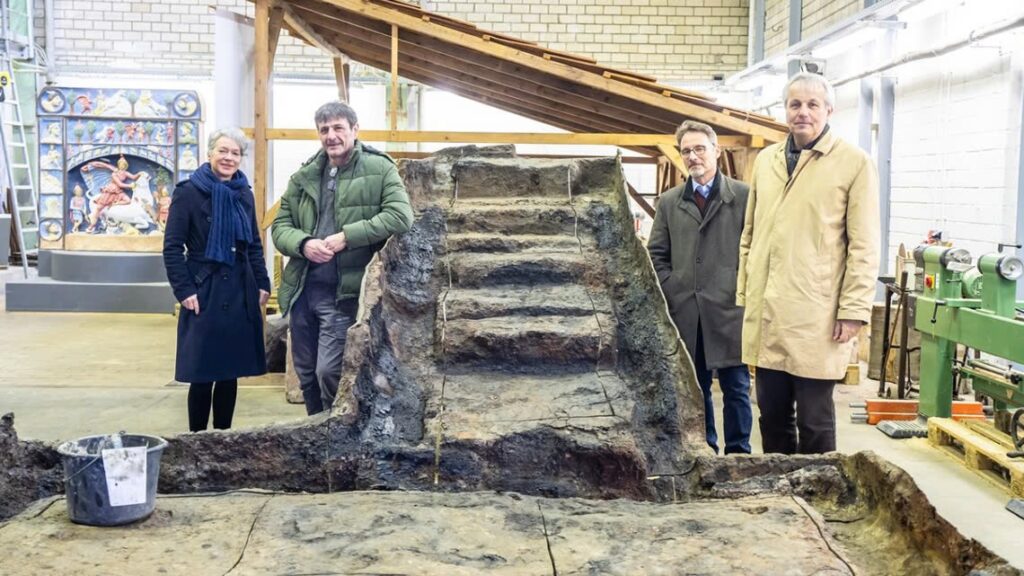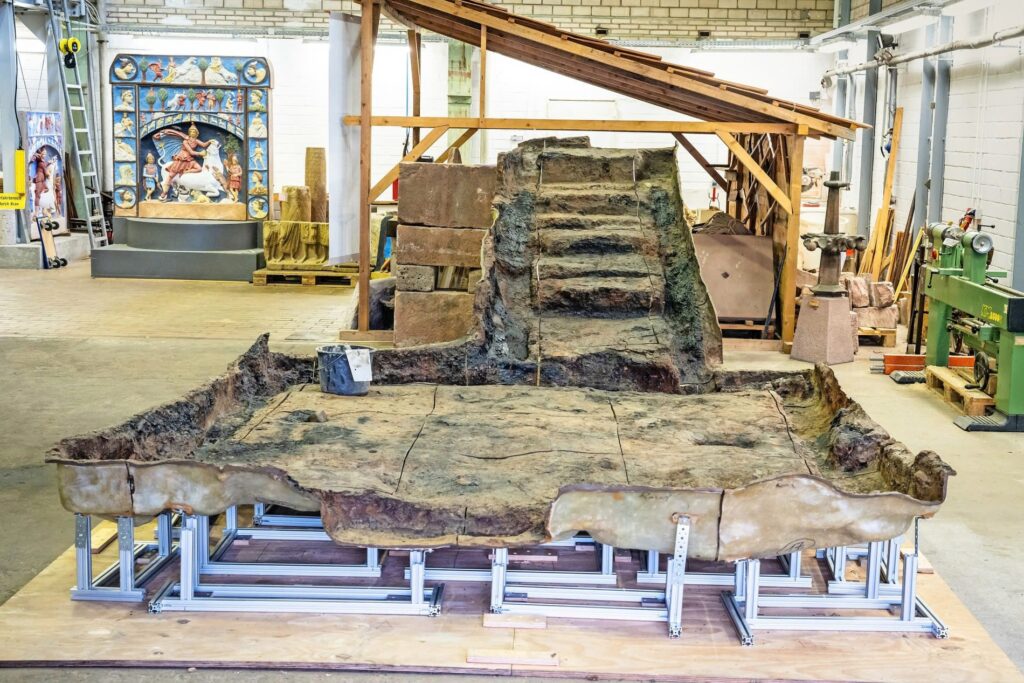A Glimpse into Roman Life in Frankfurt’s Ancient Past
The Discovery That Shook Archaeological Circles

In a groundbreaking find, archaeologists from the Frankfurt Archaeological Museum have uncovered a remarkably preserved wooden cellar in the ancient Roman city of Nida, located in modern-day Frankfurt, Germany. This discovery offers an unprecedented look into the daily life of Roman settlers in the region nearly two millennia ago.
Nida: A Forgotten Roman Metropolis

Nida, once a thriving Roman settlement, was the capital of the Civitas Taunensium and boasted a population of around 10,000 at its peak in the first century AD. Situated in what are now Frankfurt’s districts of Heddernheim and Praunheim, it was one of the largest Roman settlements in the Limes area. However, its glory was short-lived, as the population began to decline around 259 AD due to the Alemanni’s conquest of the surrounding region.
A Cellar Frozen in Time

The newly discovered wooden cellar, believed to be part of a Roman residential building from the late first century AD, has yielded a treasure trove of information. Located on the southern side of Nida’s two main streets, the cellar entrance faced the bustling thoroughfare known as Platea Praetoria.
A Fiery End Preserved for Posterity
Perhaps the most intriguing aspect of this discovery is the evidence of a catastrophic fire that destroyed the house in antiquity. Charred beams, charcoal, and fire debris tell a vivid story of destruction. Among the ruins, archaeologists found melted glass jars and iron utensils still lying on the cellar stairs, suggesting that the residents fled in haste, unable to save all their belongings.

A Phoenix from the Ashes
Despite the devastating fire, life in Nida persevered. The property was eventually rebuilt, though the cellar itself fell into disuse. This resilience speaks volumes about the determination of the Roman settlers in this frontier town.
Unraveling the Mysteries of Nida
While this cellar is not the first fire-damaged structure found in Nida, it is by far the best preserved and most thoroughly examined using modern archaeological techniques. As researchers continue to evaluate the finds from this excavation, they hope to pinpoint the exact dates of the cellar’s construction and destruction, shedding even more light on this fascinating chapter of Roman history in Germany.

This remarkable discovery serves as a time capsule, offering us a unique window into the lives of those who called Nida home nearly 2,000 years ago. It stands as a testament to the enduring legacy of Roman civilization and the power of archaeological research to bring the past vividly to life.

